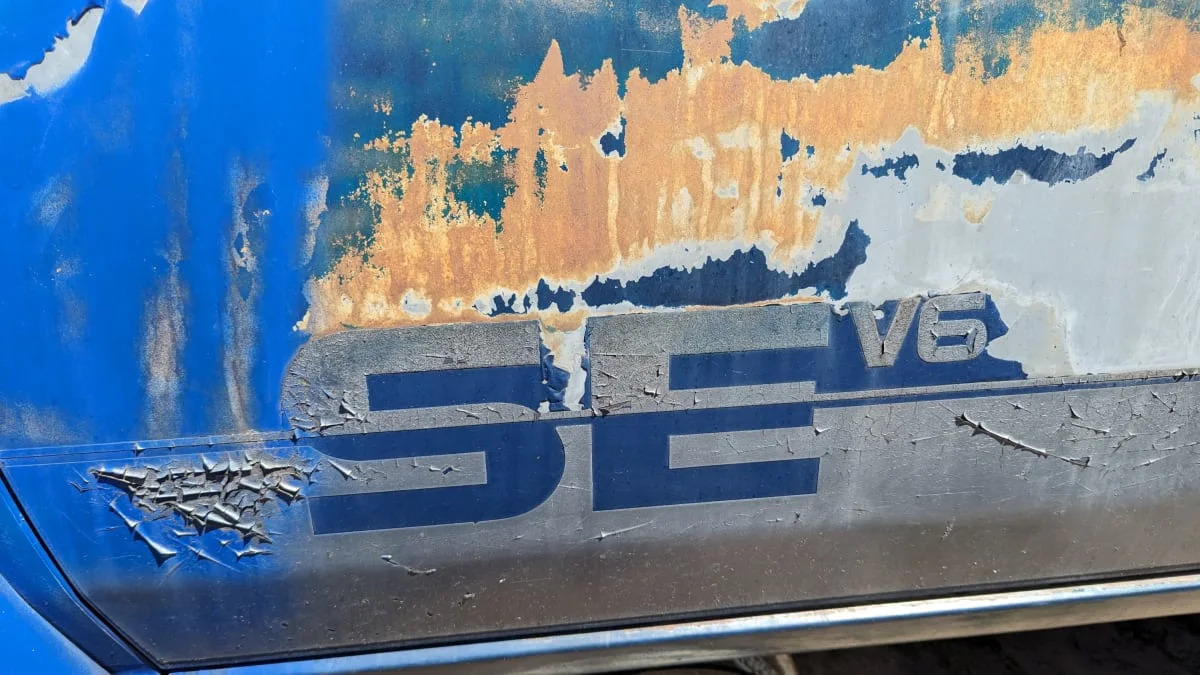Nissan did well
The name referred to the D21’s stronger double-walled bed, but the marketing was pure mid-1980s American materialism and fitness worship
Nissan did well
The name referred to the D21’s stronger double-walled bed, but the marketing was pure mid-1980s American materialism and fitness worship

For its first model year, the Hardbody was available with two choices of engine, two bed lengths and in rear- or four-wheel-drive configuration. This is the upscale SE version with regular bed and four-wheel-drive.

The SE came with this fuel-injected 3.0-liter SOHC V6, rated at 138 horsepower and 167 pound-feet and sibling to the 300ZX’s more powerful mill. The base ’86 Hardbodies got 2.4-liter straight-fours with 106 horsepower.

An automatic transmission was available, but this truck has the standard five-speed manual.

The original buyer didn’t take the base transmission out of cheapness, because air conditioning was an even more expensive option than the slushbox.

It traveled just over 170,000 miles during its life.

The Wyoming tags show that it was last registered a decade ago, and the paint shows ample signs of long-term outdoor storage in the harsh High Plains climate.

It appears that its final days on the road were interesting ones.

The interior is in decent shape under the dirt, and the body isn’t suffering from serious corrosion. I suspect this truck could have been put back on the road without too much trouble, but it’s just too small and has too many pedals for to be worth much in the 2020s.

Nissan stopped emphasizing the Hardbody name after a while, but North American sales of the D21 continued all the way until its replacement, the Nissan Frontier
She needs a Hardbody.